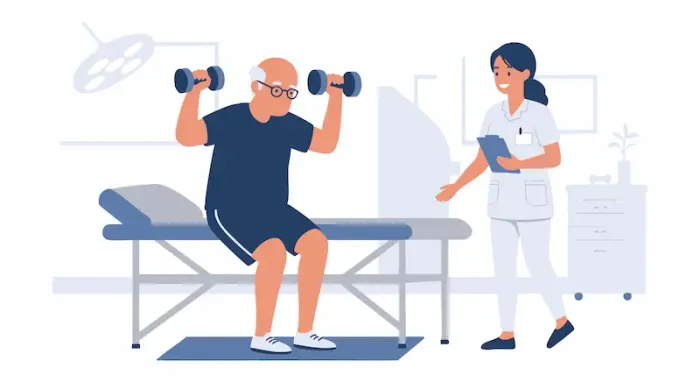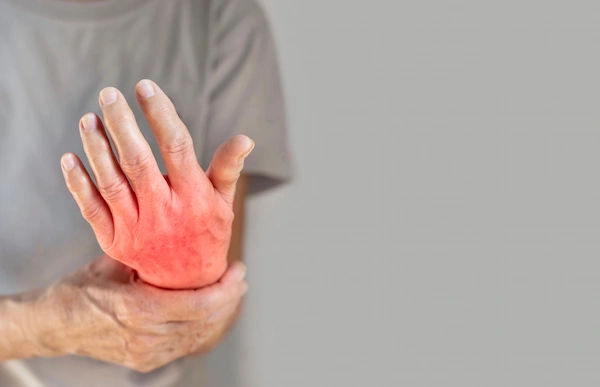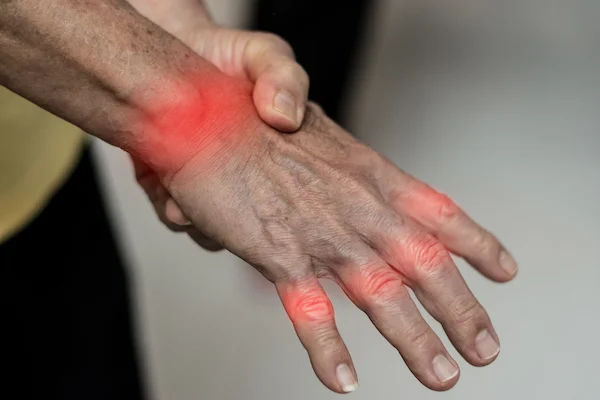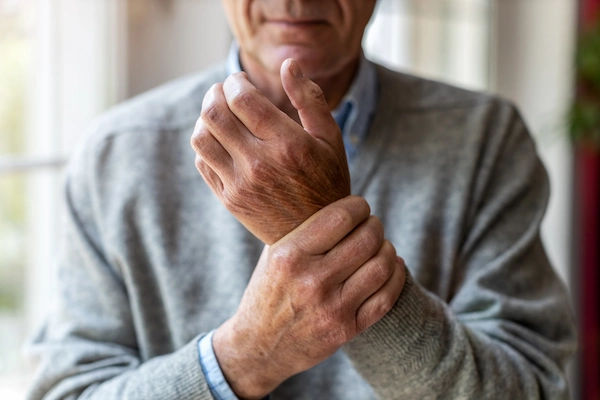Weight Management for Arthritis Prevention: A Guide
Know about the weight management for arthritis, how it helps in arthritis, joint smart through food, tracking progress, setting goals and more.


Introduction
If you want to keep your joints moving well as you age, weight management is one of the most powerful tools you have. Extra body weight doesn’t just sit quietly on the sidelines—it increases the force across your knees and hips with every step, and drives inflammation that can speed up joint wear. For people living with inflammatory conditions like rheumatoid arthritis or gout, smart weight management may also reduce flares and disease activity. In this practical guide, we cut through confusion and show how weight management supports arthritis prevention. You’ll learn what the science says, how much weight loss makes a difference, what to eat, how to move (even when you’re sore), and behavior strategies that actually stick.
Main body.
Consult Top Rheumatology Doctors for Personalised Advice
Why Weight Management Matters for Arthritis Prevention
Mechanical load: how body weight multiplies force at the knee and hip
Every pound on your frame magnifies the load on weight-bearing joints. In walking, biomechanical studies show the knee experiences roughly 3–4 times body weight with each step. That’s why losing 1 pound of body weight can reduce about 4 pounds of pressure on the knee joint per step—translating to thousands of pounds off your knees daily [1]. Over time, lower joint load slows cartilage wear and reduces pain risk. This is especially crucial for the knees, hips, and spine, where osteoarthritis (OA) most commonly appears
Inflammation: adipose tissue, cytokines, and joint wear
Adipose tissue isn’t inert; it secretes inflammatory molecules (adipokines like leptin, resistin) and cytokines (IL-6, TNF-α) that circulate systemically. This low-grade inflammation can accelerate cartilage breakdown and sensitize pain pathways. Visceral fat is particularly active in driving systemic inflammation, linking higher waist circumference and BMI to greater arthritis risk and severity. Weight management reduces these inflammatory signals one reason joint pain often falls faster than you’d expect for the pounds lost.
Metabolic health links: insulin resistance, HbA1c, and cartilage
Metabolic syndrome—abdominal obesity, high blood pressure, elevated triglycerides, low HDL, and higher blood glucose—correlates with OA progression. Insulin resistance and higher HbA1c can impair cartilage cell metabolism and increase oxidative stress. Improving metabolic health through diet quality, weight loss, and activity supports joint tissues and reduces risk. If you live with prediabetes or diabetes, focusing on an anti-inflammatory diet and regular movement helps both blood sugar and joints. Apollo24|7 offers convenient home collection for tests like HbA1c and vitamin D if you need a baseline.
How Much Weight Loss Helps? What the Science Says
The “4 pounds off the knee” rule per pound lost
Landmark work shows that each 1-pound loss reduces knee joint load by roughly 4 pounds multiplied across thousands of steps daily. That mechanical relief often translates into less pain and better function.
5–10% weight loss: thresholds for pain and function gains
Clinical trials in knee OA consistently show benefits at modest weight-loss levels. In the IDEA trial, intensive diet plus exercise achieved ~10% weight loss, delivering greater reductions in knee pain, improved function, and lower inflammatory markers (like IL-6) compared with exercise alone. Analyses across studies suggest 5–10% body weight loss produces clinically meaningful improvements think less morning stiffness, easier stairs, and longer walks without flares.
Preventing incident osteoarthritis: what long-term studies show
Epidemiologic data indicate that sustained weight loss reduces the risk of developing knee OA, particularly in women with higher baseline BMI. One classic cohort suggests that losing about 5 kg (11 lb) can cut incident knee OA risk by roughly 50% over a decade for some groups. While not all risk can be eliminated—genetics, age, and prior injuries matter—weight management remains one of the most modifiable levers for prevention. Long-tail keywords: weight loss for knee osteoarthritis; BMI and osteoarthritis risk.
Building a Joint-Smart Eating Pattern
This includes:
The Mediterranean-style template: anti-inflammatory and sustainable
A Mediterranean-style eating pattern—vegetables, fruits, legumes, whole grains, nuts, olive oil, fish, and modest dairy has strong evidence for reducing cardiometabolic risk and systemic inflammation. It’s also naturally supportive of weight management because it emphasizes fiber-rich, low–energy density foods that fill you up on fewer calories. For arthritis prevention, this anti-inflammatory diet may reduce the cytokine “noise” that fuels joint degradation.
Protein, fiber, and satiety: hitting targets without overloading calories
Protein protects muscle during weight loss—a critical factor for joint stability. Aim for 1.0–1.2 g protein/kg body weight daily, spread across meals. Pair with fiber targets of 25–35 g/day from legumes, whole grains, fruits, and vegetables. Practical anchors:
- Breakfast: Greek yogurt or eggs with vegetables and whole-grain toast.
- Lunch: Lentil salad with olive oil vinaigrette, nuts, and leafy greens.
- Dinner: Grilled fish, quinoa, and a big roasted veg tray.
- Snacks: Fruit, nuts, edamame, cottage cheese.
- Hydrate well; replacing sugar-sweetened beverages with water or unsweetened tea can shave hundreds of daily calories.
Simple swaps: sugar-sweetened beverages, refined carbs, and oils
Choose extra-virgin olive oil over butter or tropical oils; switch refined grains for intact whole grains; replace sweets with fruit-and-protein pairings; and cap alcohol. Use herbs, spices, citrus, and vinegar for flavor without excess calories.
Movement That Protects Joints (Even if You’re Sore)
Low-impact cardio: walking progressions, cycling, and pool therapy
Motion is lotion for your joints. Aim for 150–300 minutes/week of moderate activity, scaled to your current capacity. Start where you are:
- Walking ladder: Day 1, 10 minutes; add 2–5 minutes every other day until you reach 30–45 minutes. Use softer surfaces or supportive treadmills if pavements irritate your knees.
- Cycling and elliptical: Excellent for cardio without impact. Adjust seat height and resistance to avoid knee pain.
- Aquatic exercise: Pool walking or water aerobics reduces joint load while maintaining intensity—ideal during flare-ups or for higher-weight individuals [6]. Long-tail keyword: joint-friendly exercises for arthritis prevention.
Strength training: 2–3 days/week to support cartilage and stability
Stronger muscles act like shock absorbers. Include:
- Lower body: sit-to-stand, step-ups, bridges, hip abduction, hamstring curls.
- Core and hips: planks, side planks, monster walks with a loop band.
- Upper body: rows, presses, and light carries.
Use a weight you can lift for 8–12 controlled reps with 2–3 sets. Resistance bands and body weight are fine to start. Progress gradually—pain during or after should stay mild and transient.
Mobility and balance to prevent falls and flares
Spend 5–10 minutes on mobility and balance (calf stretches, hip flexor stretches, ankle mobility, single-leg stands). Good movement quality protects cartilage by distributing forces evenly. Add yoga or tai chi 1–2x/week to improve proprioception and reduce stress.
Micro-workouts for busy days
If 30 minutes is hard to find, try three 10-minute sessions: a brisk walk, a band circuit, and gentle mobility before bed. Consistency beats perfection.
When to Seek Extra Help
Working with a dietitian or physical therapist
A registered dietitian can personalize calorie targets, protein needs, and meal structure; a physical therapist can tailor joint-friendly progressions and address gait mechanics that overload knees. This can be game-changing if you have prior injuries or persistent pain.
Anti-obesity medications (e.g., GLP-1s): who might benefit
For individuals with BMI ≥30, or ≥27 with weight-related complications (including osteoarthritis), evidence-based medications can boost weight loss to 10–15% or more, improving pain and function indirectly by unloading joints and dialing down inflammation. Discuss risks, benefits, and suitability with your doctor; medication is an addition to not a replacement for nutrition and activity.
Bariatric surgery: evidence for joint outcomes
Surgery can lead to 20–30% body weight loss and is associated with reduced knee and hip pain, improved function, and delayed need for joint replacement in some cohorts [10]. It’s a major decision requiring multidisciplinary assessment and long-term follow-up.
Labs that matter: HbA1c, lipids, vitamin D
Baseline labs guide your plan and track metabolic improvements. If you’re due, Apollo24|7 offers convenient home collection for tests like HbA1c, lipid profile, and vitamin D.
If your condition does not improve after trying these methods, book a physical visit to a doctor with Apollo24|7 to tailor next steps.
Setting Goals, Tracking Progress, and Staying Motivated
SMART goals and 12-week roadmaps
Set specific, realistic targets: “Lose 6–8% in 12 weeks by walking 30 minutes 5 days/week, strength training 2 days/week, and eating 25 g fiber/day.” Break into 2-week sprints (e.g., add a 10-minute walk after lunch; cook 2 Mediterranean dinners).
Plateaus, setbacks, and course corrections
Expect plateaus. When they happen, check: sleep debt, snack creep, strength training consistency, and step count. Small tweaks (adding 1000 steps/day, 10 g more protein at breakfast, or 1 more strength session/week) often restart progress. During flares, pivot to pool exercise and upper-body work to maintain momentum without aggravating joints.
Celebrating non-scale victories
Track wins like fewer pain days, longer walks before soreness, better balance, improved lab values, looser clothes, or climbing stairs more easily. These reflect real improvements in joint health and quality of life—even before the scale catches up.
Conclusion
Arthritis prevention doesn’t hinge on perfection—it rides on consistent, doable steps that lower joint load and quiet inflammation. Weight management is uniquely powerful here: losing even 5–10% of your body weight can translate into thousands of pounds less force on your knees each day, less pain, and more freedom to move. Pair a Mediterranean-style eating pattern with enough protein and fiber to feel satisfied, and choose joint-friendly movement walking, cycling, pool work, and strength training to build resilience without aggravation.
Remember the whole picture: better sleep, less stress, and smart tracking make healthy choices easier when life gets busy. If you live with inflammatory arthritis or gout, weight management can help reduce disease activity and flares while improving metabolic health. And if you’re stuck, it’s okay to get help—clinicians, dietitians, physical therapists, and If symptoms persist beyond two weeks or you’re unsure which path fits your health status, consult a doctor online with Apollo24|7 or book a physical visit for personalized guidance. Apollo24|7 can also arrange home collection for labs like HbA1c or vitamin D to fine-tune your plan.
Consult Top Rheumatology Doctors for Personalised Advice
Consult Top Rheumatology Doctors for Personalised Advice

Dr. Zulkarnain
General Physician
2 Years • MBBS, PGDM, FFM
Bengaluru
PRESTIGE SHANTHINIKETAN - SOCIETY CLINIC, Bengaluru

Dr. Anand Ravi
General Physician
2 Years • MBBS
Bengaluru
PRESTIGE SHANTHINIKETAN - SOCIETY CLINIC, Bengaluru
Dr Ankit Patowari
Rheumatologist
6 Years • MBBS, MD MEDICINE, DM RHEUMATOLOGY
Guwahati
Apollo Clinic Guwahati, Assam, Guwahati

Dr. Brig K Shanmuganandan
Rheumatologist
20 Years • MBBS, MD (Med.), DNB (Med.), Fellow (Rheuma.)
Chennai
Apollo Hospitals Greams Road, Chennai
(475+ Patients)

Dr. Ramineni Naga Tejaswini
Rheumatologist
3 Years • MBBS, DNB(Internal Medicine), DrNB ( Clinical Immunology and Rheumatology)
Hyderabad
Apollo Hospitals Jubilee Hills Hyderabad, Hyderabad
Consult Top Rheumatology Doctors for Personalised Advice

Dr. Zulkarnain
General Physician
2 Years • MBBS, PGDM, FFM
Bengaluru
PRESTIGE SHANTHINIKETAN - SOCIETY CLINIC, Bengaluru

Dr. Anand Ravi
General Physician
2 Years • MBBS
Bengaluru
PRESTIGE SHANTHINIKETAN - SOCIETY CLINIC, Bengaluru
Dr Ankit Patowari
Rheumatologist
6 Years • MBBS, MD MEDICINE, DM RHEUMATOLOGY
Guwahati
Apollo Clinic Guwahati, Assam, Guwahati

Dr. Brig K Shanmuganandan
Rheumatologist
20 Years • MBBS, MD (Med.), DNB (Med.), Fellow (Rheuma.)
Chennai
Apollo Hospitals Greams Road, Chennai
(475+ Patients)

Dr. Ramineni Naga Tejaswini
Rheumatologist
3 Years • MBBS, DNB(Internal Medicine), DrNB ( Clinical Immunology and Rheumatology)
Hyderabad
Apollo Hospitals Jubilee Hills Hyderabad, Hyderabad
More articles from Arthritis
Frequently Asked Questions
1) How much weight do I need to lose to help my knees?
Even 5–10% weight loss can significantly reduce knee pain and improve function. Each pound lost takes about 4 pounds of pressure off the knee per step (weight loss for knee osteoarthritis).
2) What’s the best diet for arthritis prevention?
A Mediterranean-style, anti-inflammatory diet—rich in vegetables, whole grains, legumes, fish, nuts, and olive oil—supports weight management and metabolic health linked to lower arthritis risk.
3) Can I exercise with sore knees?
Yes. Choose low-impact cardio (walking, cycling, pool therapy) and add 2–3 days/week of strength training. Start small, progress gradually, and prioritize form (joint-friendly exercises for arthritis prevention).
4) Will weight loss help rheumatoid arthritis or gout?
Weight loss can reduce RA disease activity and lower uric acid in gout, decreasing flares. Combine anti-inflammatory eating with gradual weight loss and regular movement (gout diet and weight loss).
5) When should I consider medications or surgery for weight loss?
If BMI ≥30 or ≥27 with complications (like osteoarthritis) and lifestyle changes haven’t worked, evidence-based medications (e.g., GLP-1s) or bariatric surgery may help. Discuss with a clinician; Apollo24|7 can guide next steps.




